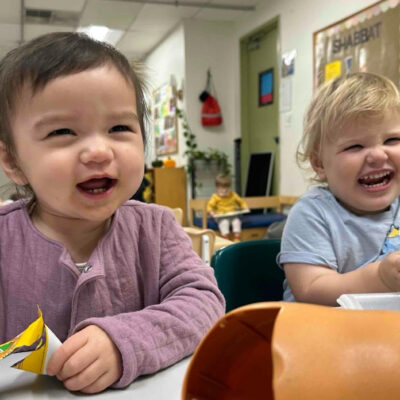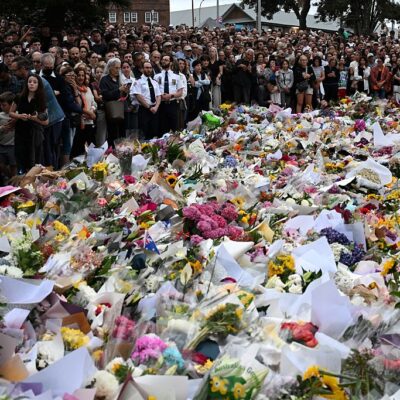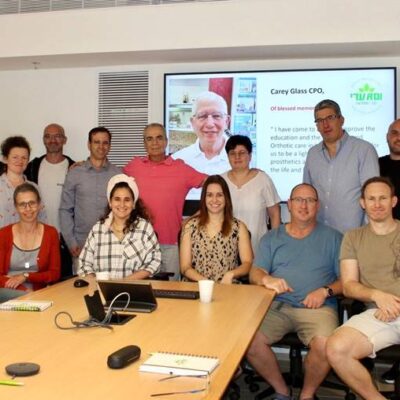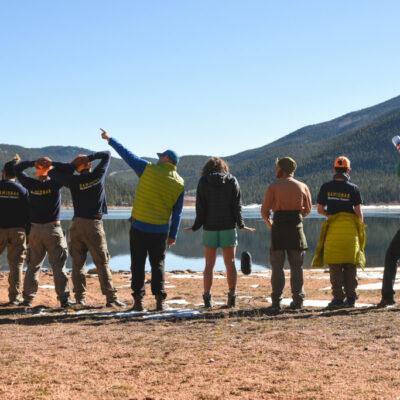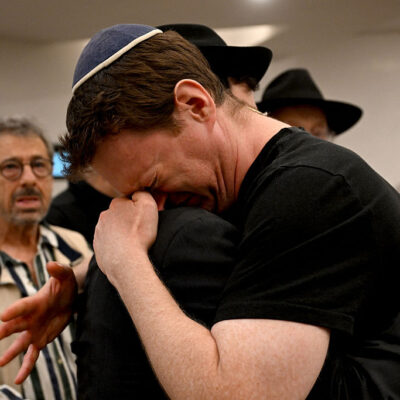The Shelf Life of Innovative Educational Models: A Cautionary Tale

By Dr. Lesley Litman
[This is the sixth in a weekly series of posts from a coalition of institutions across the continent devoted to nurturing the emerging transformation of congregational and part-time Jewish education. The series is curated by the Leadership Commons at the William Davidson Graduate School of Education of The Jewish Theological Seminary.]
In the world of curriculum design, common wisdom is that most curricula have a limited shelf life – usually about five years, maybe a little more. In Jewish education, we know that programs, such as family education or youth group events, also have a shelf life. After a number of years they need to be totally revamped or done away with as issues and realities change, especially at the breakneck pace of the 21st century.
In Boston, we are particularly proud of the new models of congregational education that have emerged as a result of the partnership between congregations, Boston’s federation, Combined Jewish Philanthropies, and HUC-JIR’s Experiment in Congregational Education. These innovative models include extensively reconfigured education programs such as Mayyim at Temple Beth Shalom, in Needham, Massachusetts, in which children learn in multi-age groupings, educators are known as “Learning Guides,” and all learning is organized around engaging projects that are authentic to children’s lives. At Temple Shir Tikvah in Winchester, Massachusetts, through learning and engagement, profound and ongoing connections are made between members of congregational committees (membership, caring, Israel, ritual, and so forth) and learners in different grades. These are just two examples of multiple new and innovative models of congregational Jewish education in Greater Boston.
In a recent conversation, a respected colleague described her congregation’s thorough, intentional, and sophisticated educational strategic planning process. The goal was to adopt – or adapt; that is, take an already existing model and bring it into a new setting – or find a new model or models that will meet the current and future needs of her ever-evolving congregation. As is true with many conversations of this nature, the topic quickly turned to the question, “Which model would be right for us?” And herein lies the challenge.
“How do we know which model is right for us?” On the one hand, it makes good sense in terms of time, effort, and finances to take advantage of and adopt existing innovative models that seem to match the educational and strategic goals of a congregation. Or, to put it another way, “Why reinvent the wheel?” On the other hand, two assumptions likely inherent in this view suggest reasons to be quite cautious when adopting an already existing model. The first suggests that innovative models, once developed, are relatively static. The second is the notion that in the equation of “process” and “product,” the product side (the final model) holds more weight (how much more is up for debate) than the process of developing and implementing the model.
Let’s start with the second assumption: the “product” holds more weight than the process. After what are often many meetings and hours of deliberation, of trials and errors and ups and downs, a new model is implemented. The ultimate goal of the process is to find the “right” model. Once this occurs, it might seem that, with the onset of implementation, the hard work is over, except perhaps for some process of reflection and limited tweaking.
Our experience in Boston teaches us that this is not the case. With each round of implementation, unforeseen possibilities and aspects of the model came to light and adaptations and refinements were desired. For example, when Temple Chayei Shalom in Easton, Massachusetts decided to move to a fully project-based learning approach, the education director, with significant support from the CJP consultant, designed the projects and, through extensive professional learning sessions, worked with teachers on learning the Jewish content and implementing the projects. The initial plan was for the education director to take over the role of the consultant, designing the projects and leading the professional learning for teachers. Over the course of a number of years the education director discovered that, after encountering some resistance early on, teachers were able and willing to take on some of the professional learning pieces and to teach one another.
Today, looking at the “final” product, one would see a model in which teachers study and teach one another the Jewish content of the project and then decide together as a staff about the project’s overview and specific contours. The danger, then, for outsiders seeking to adopt or adapt a model, is in assuming that the teachers’ role was part and parcel of the model from the outset, and thereby potentially missing the fact that the model in its current (and future) form is the result of rigorous ongoing processes.
This points to the first assumption, that models in their “final” form are static. Innovative models, at any given point in time, if they are to be sustainable over the long-term (to elude the shelf life problem), must be, at their core, not a single model but, rather, what Cyd Weismman calls “a spiraling series of innovations in the direction of a vision.” As Temple Shir Tikvah in Winchester learned, each year of implementing their relational model of committees paired with grades in the religious school led to changes in understanding both how the model should work and who would be involved in the learning process. Some committees, for example, were able to suggest clear-cut actions that the children were able to embrace (Tikkun Olam and Caring committees) while the work of other committees (such as the Israel and Ritual committees) challenged the model as it was initially understood. This led, over time, to deeper engagement of committee members and parents in the decision-making that in turn led to greater lay-leader involvement across the board. More extensive parent and lay involvement was not part of the original model, yet today it is at the center of the work. The model looks quite different from its initial conception.
As the work of innovation in congregational education continues to evolve, as additional models are developed and implemented and as more and more congregations seek to adopt new models, success could depend on a clear and ever-present recognition that the work of innovation, once embarked upon, does not end. The innovative model of today is not, and should not be, the same model tomorrow. As we develop the educational structures and frameworks of the models, we must also develop the mindset and capacity for continuous reflection, and refinement.
Dr. Lesley Litman is the director of the Executive MA Program in Jewish Education at the Hebrew Union College-Jewish Institute of Religion and works with the Experiment in Congregational Education as the coordinator of its Boston-based initiative.

 Add EJP on Google
Add EJP on Google
